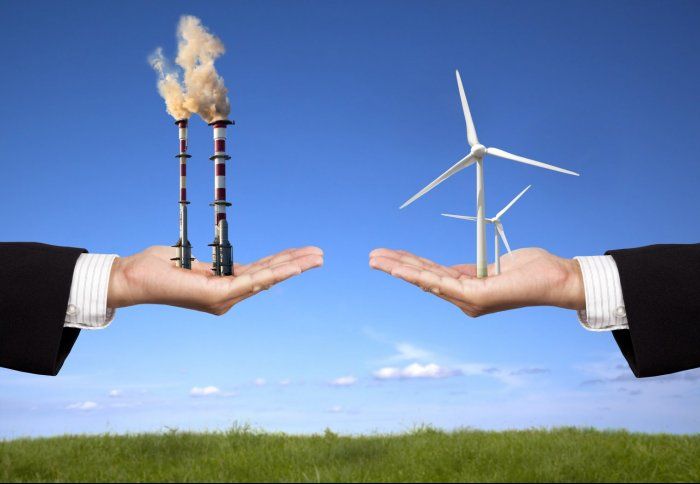Ctrl-alt-protein
Animal ag is a major contributor to climate change, but the Australian government is reluctant to include it in their net zero commitments

Animal proteins such as meat, dairy and eggs account for almost a fifth of the world’s greenhouse gas emissions. That’s more than all transportation emissions combined. However, it seems that the current global climate change policy is still blatantly ignoring the alternative protein ecosystem. The nonprofit organisation Good Food Institute (GFI) strongly supports the alternative protein ecosystem. A recent report states an overwhelming disconnect between funding into alt-protein research and development and the potential to meet the urgent world climate goals. Leading researchers published a landmark report highlighting that the goals will remain out of reach unless there is a rapid shift away from animal agriculture. That’s even if governments immediately eradicated the use of all fossil fuels.
The United Nations warns that almost $650 billion (AUD), that’s 90 per cent of global government subsidies, is financing activities that are harmful to the people and the planet. That figure is set to rise, causing even more damage to the environment and communities. The UN is urgently calling for the damaging government funds to be repurposed towards sustainable agri-food solutions. The subsidies fuel environmental destruction by directing funds to various agricultural activities contributing to GHG emissions and deforestation.
Another report conducted by various universities clearly emphasises that reducing emissions from the global food system will go a long way to achieving the Paris Agreement climate change targets. Eating less meat and increasing consumption of whole grains, nuts, fruits, and vegetables can fix the problem. Helping farmers, particularly in low-income countries, increase their yields and encouraging the overall population to avoid overeating, wasting less and eating healthier foods will make significant inroads to slashing emissions.
It’s projected that by 2050, the world’s population will reach 9 billion people, and they will all require housing, jobs and food. With the impending climate change, scarcity of water, phosphate, land and food, several transitions need to be reached in order to achieve a food system that is healthy, high-quality, sustainable, affordable and able to meet the vastly growing demands.
Distressingly, Meat Atlas has just revealed that a mere five meat and dairy giants such as Cargill, Tyson and JBS contribute to more significant shares of GHG emissions than oil companies such as Exxon and BP. Despite the IPCC climate report warning of a "Code red for humanity," the increase of meat and dairy emissions are expected to continue. The livestock industry is increasingly damaging and having an unprecedented effect on the climate crisis and biodiversity.
Research and development funding in alternative protein is almost nonexistent compared with funding for other climate solutions despite a record level of consumer interest. Governments need to step up and match the funding that is diverted into clean energy. It's painfully clear that investment is urgently required in these undeveloped areas to build a secure foundation for future protein production and to advance efficiently.
If investments are not urgently secured, meat production is forecasted to rise by 40 million tonnes before the end of the decade. That’s a staggering 366 million tonnes per year. Add that to the devastating effect that the crops to feed them have on the environment. Over three-quarters of global agricultural land is used to raise animals or their crops. These figures have to reverse. Livestock farming and soybean cultivation to feed livestock are the most significant contributors to deforestation, whose effects include soaring emissions, destruction of indigenous communities and small farmers’ livelihoods.
Worryingly, there is ongoing investment from banks, pension funds and investment firms – the majority from Europe and the US. These giant nations must curb support of this unsatisfiable industry and stop contributing to deforestation and human rights violations that are so intrinsically ingrained into modern supply chains. Governments and investment companies must redirect billions of dollars of finance and unsavoury subsidies into small sustainable farmers and plant-based industries.
It’s essential that funds are directed towards low-income countries and sustainable agriculture. Governments must transform agriculture into a sustainable solution for a healthy population and the imminent threats of climate change, pollution and loss of nature and biodiversity. The Meat Atlas report discusses ways to restore nature, limit pollution, protect and rebuild ecosystems and promote regenerative practices. The report calls upon world governments to use a customised and evidence-based framework to support sustainable agriculture that benefits people and the planet.
Interestingly, since the pandemic, the European Union’s plant-based industry has witnessed a sustained 49 per cent growth over the last two years. Younger generations are changing their consumption habits and choosing sustainable plant-based products. Retail sales in the US are over $9 billion (AUD). There is a greater understanding and awareness about animal agriculture and its adverse effects on the climate.
With the change will come a new generation of jobs. Already, there is an impressive change in clean meat alternatives, whether it be plant-based alternatives, grown or brewed meats from animal cells or even foods built purely from molecules. Innovators and investors are clambering to be the first at the finish line and claim commercialisation of animal products grown without animals. This brings about a plethora of exciting new careers. Exciting times are ahead for food innovators that are interrupting and reinventing the food system.
Meat Atlas shows that the younger generations in Europe, and in particular Germany, no longer accept the meat industry's business model. Over 80 per cent perceive that politicians should set binding conditions for climate-friendly agriculture, better animal husbandry and a climate-friendly diet.
Governments need to wake up and rethink agriculture and make them fit for purpose to transform the agri-food systems.



